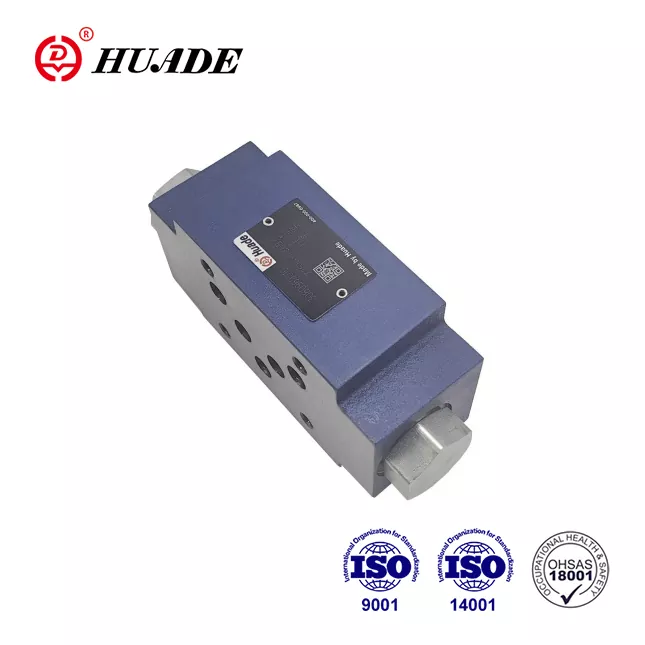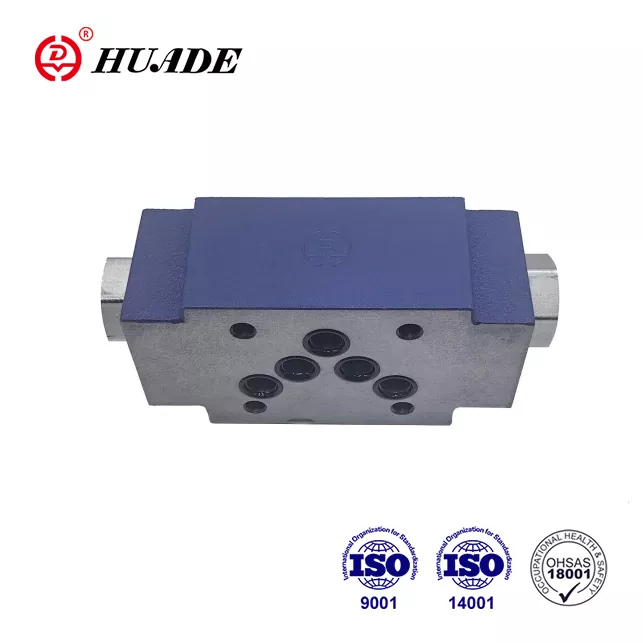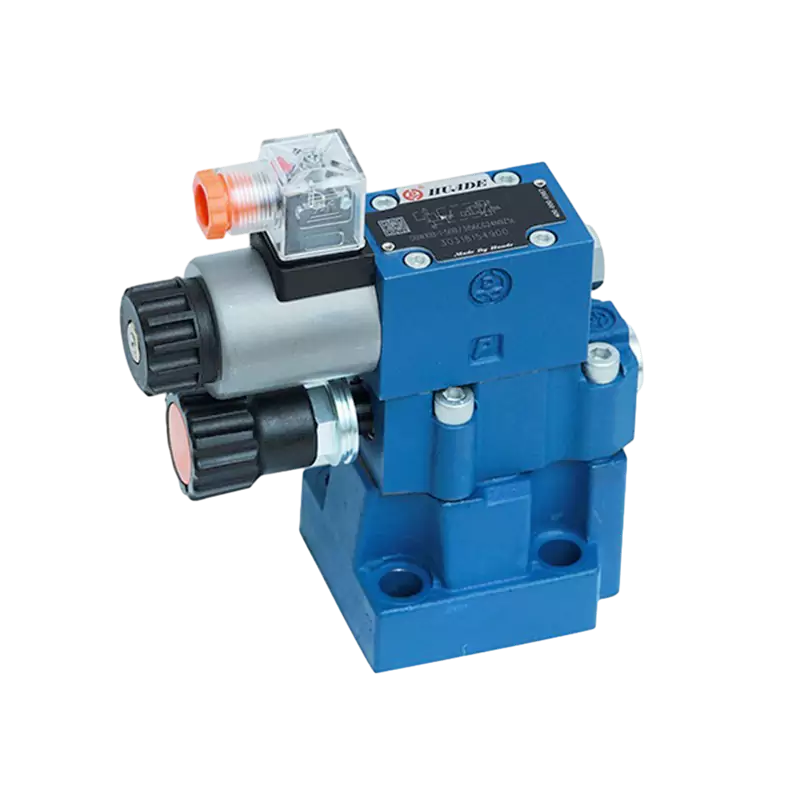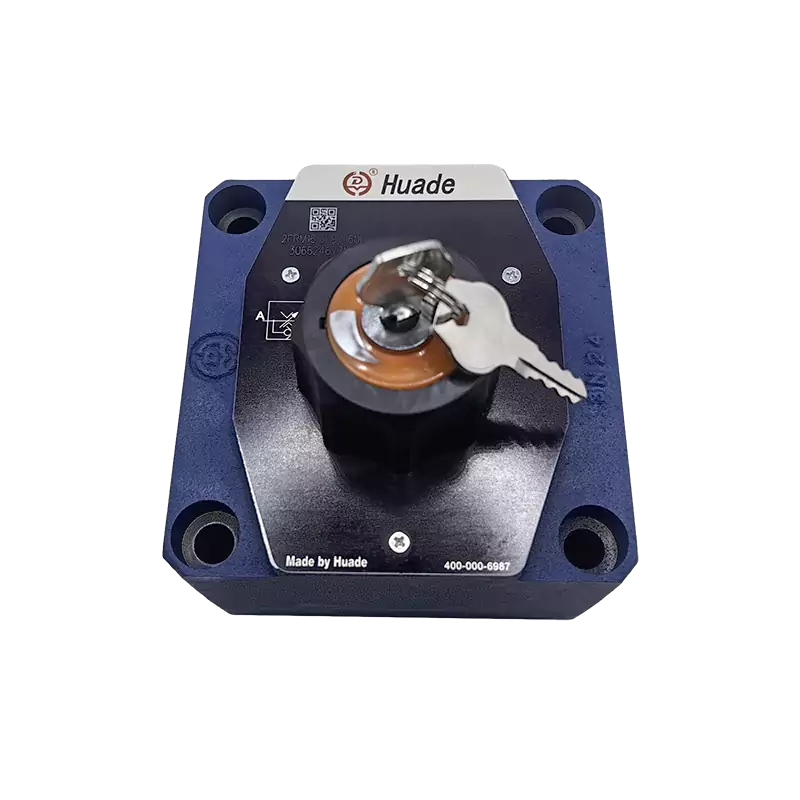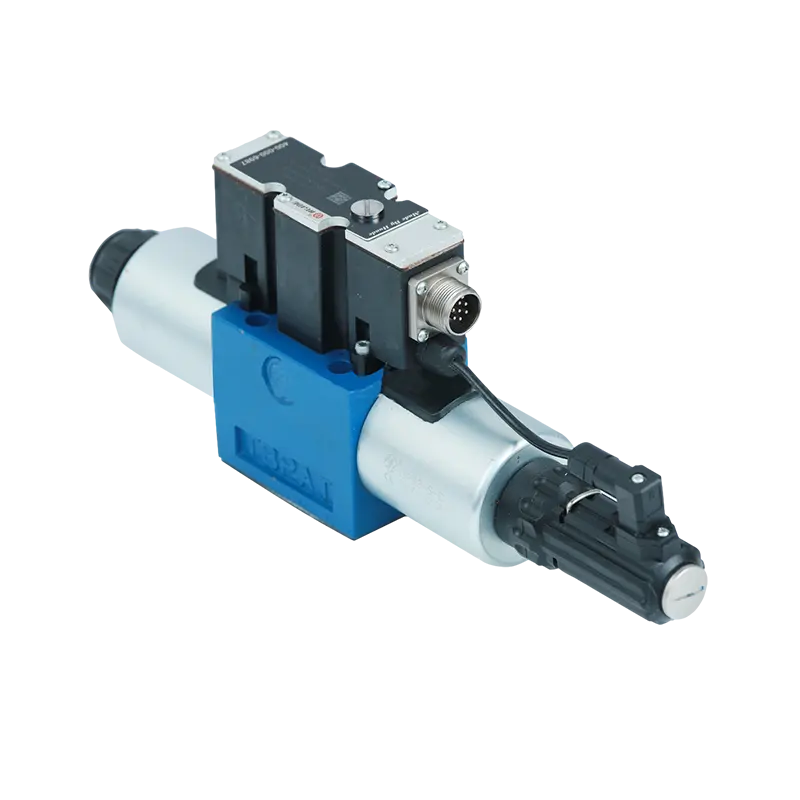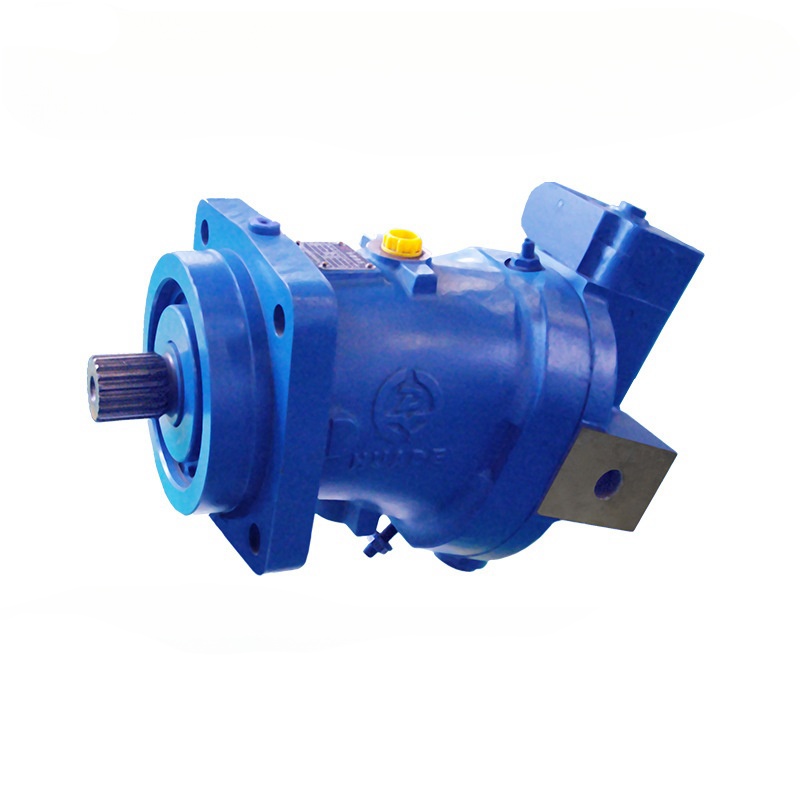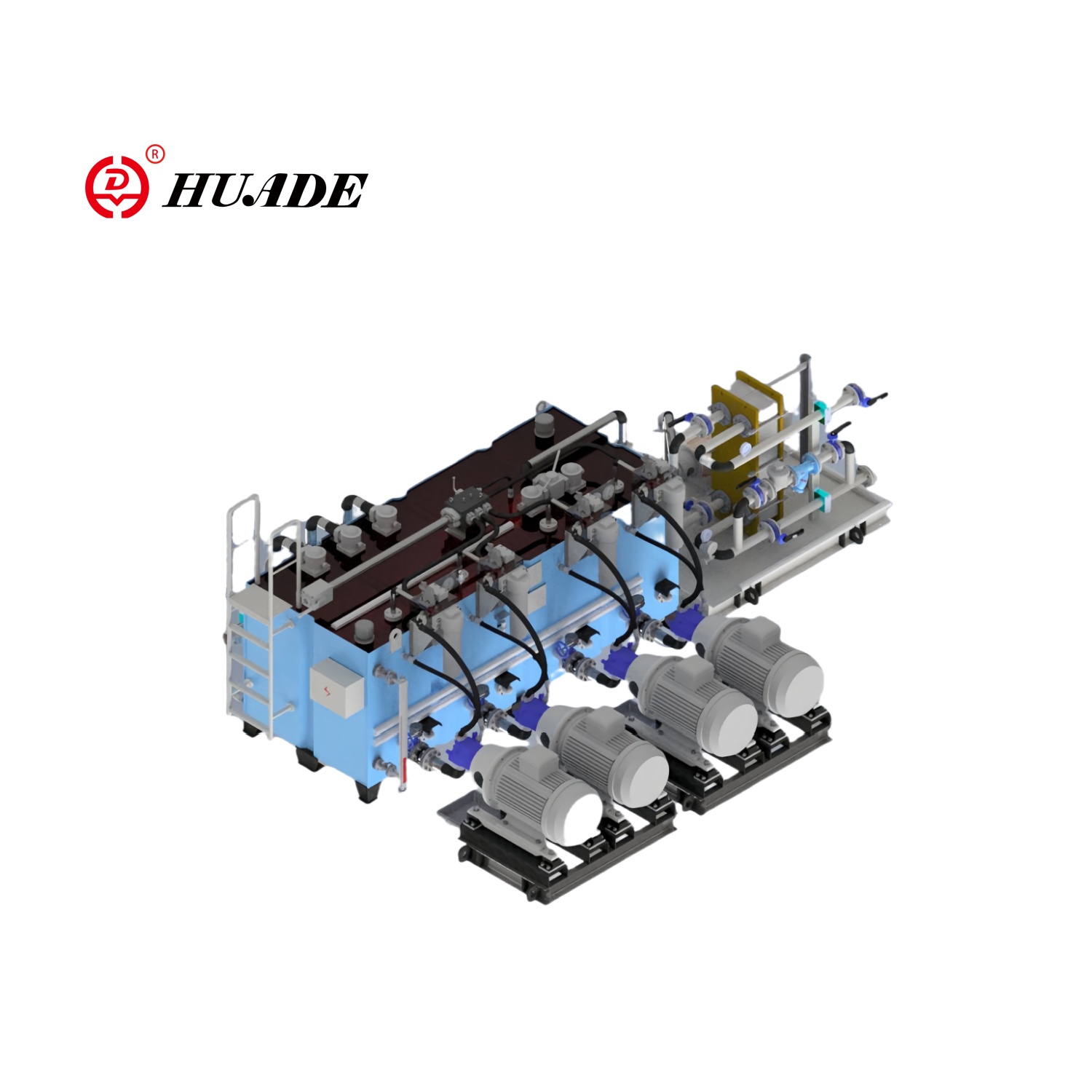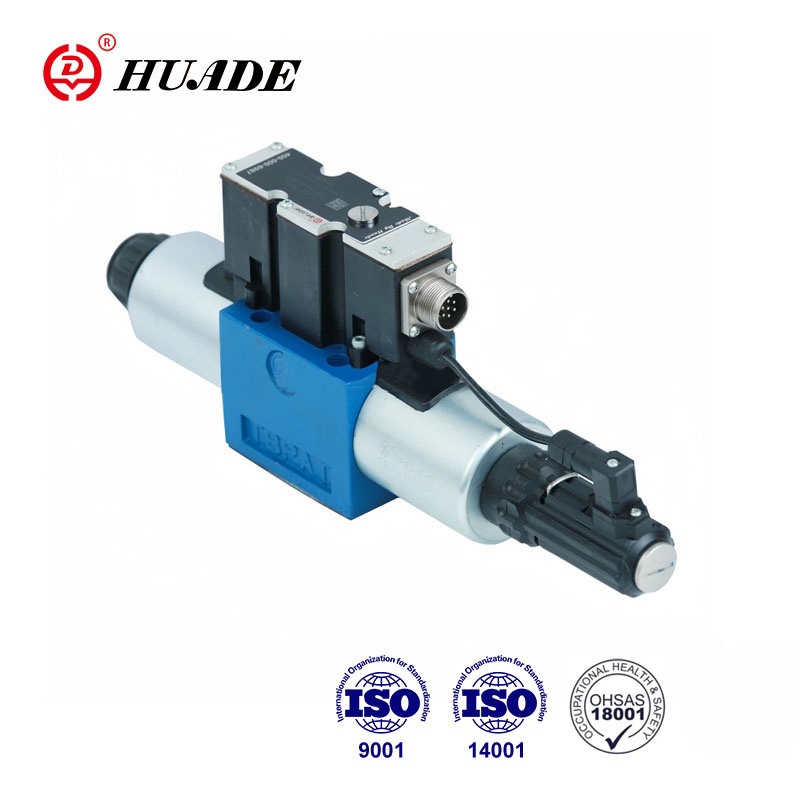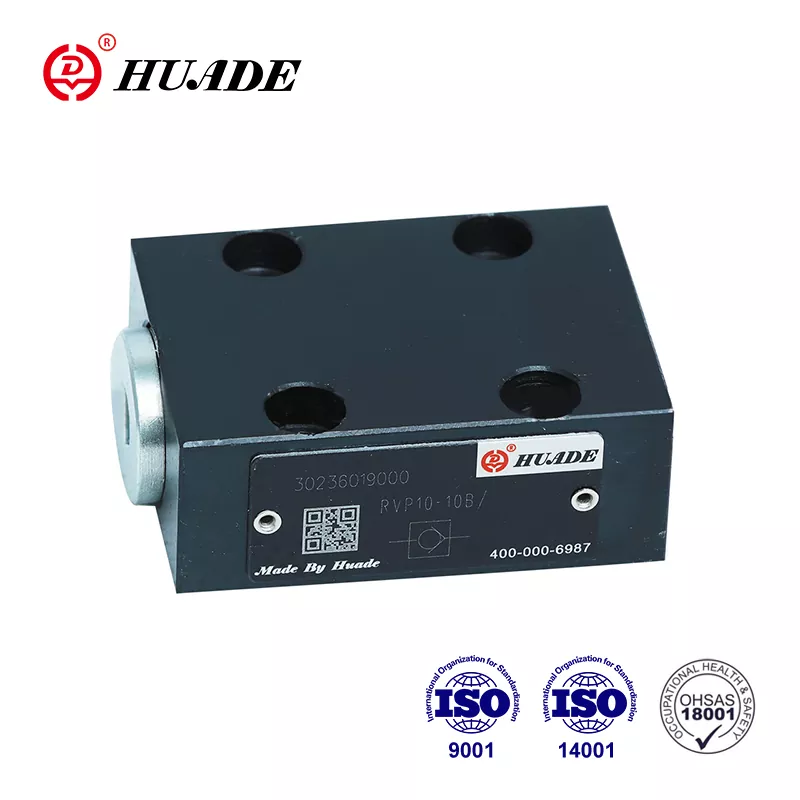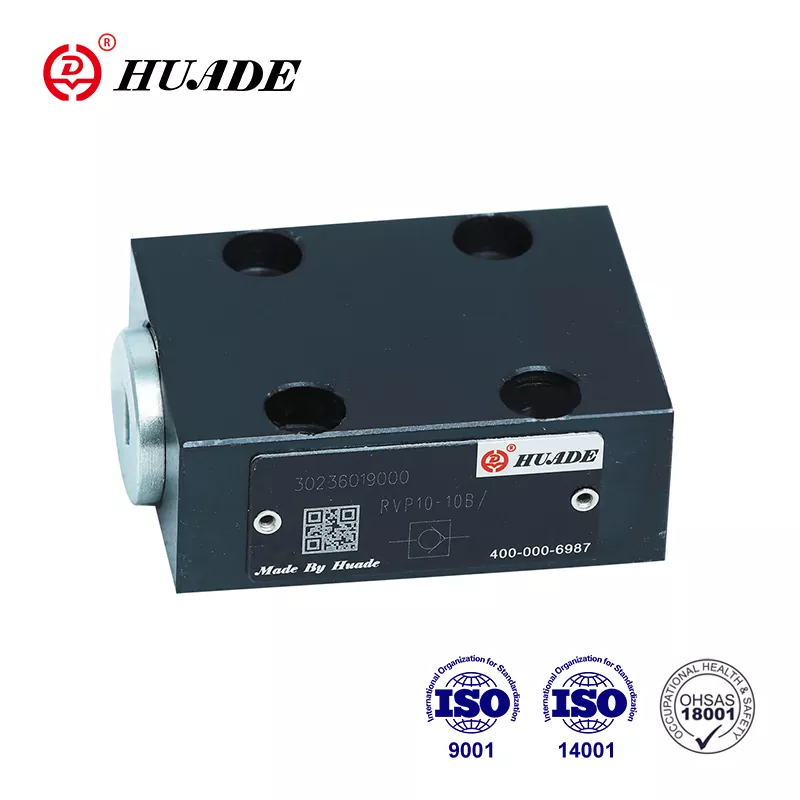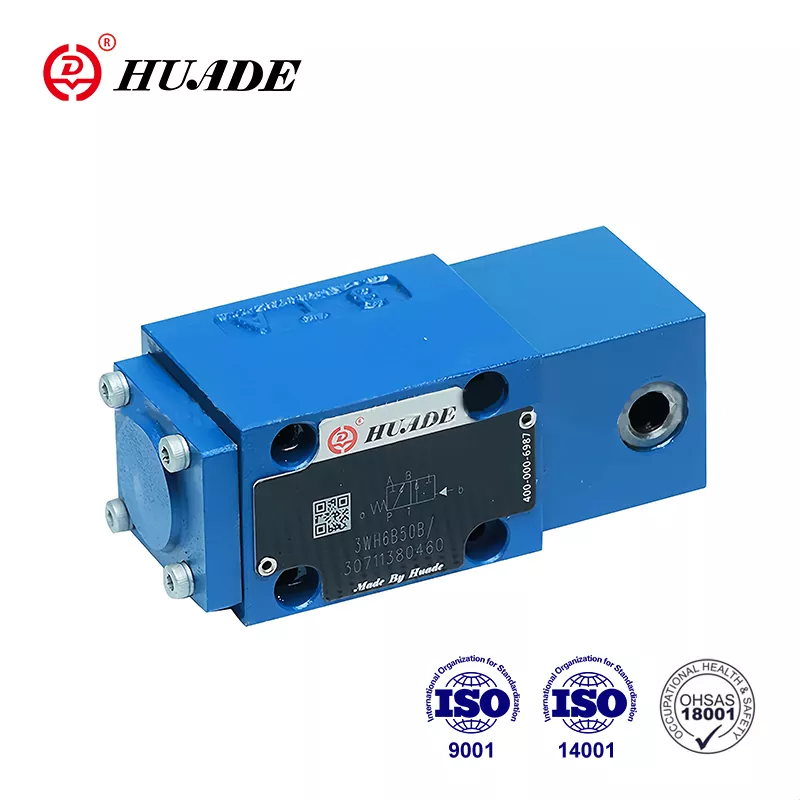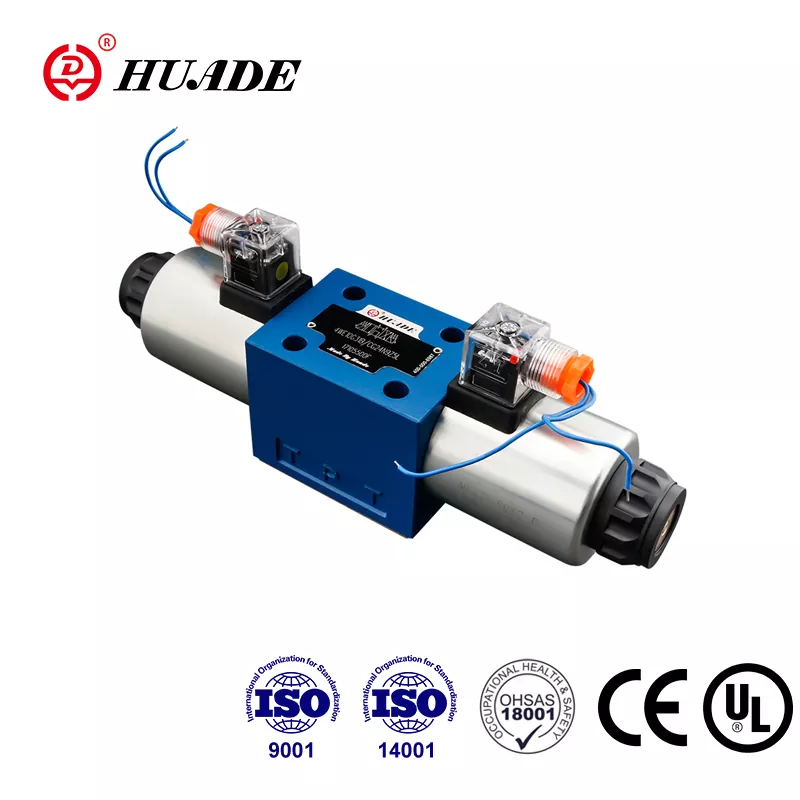When hydraulic systems need to hold pressure without leaking, the check valve sandwich plate Z2S 10 becomes an essential component. This pilot-operated check valve from Bosch Rexroth has been a reliable choice in industrial hydraulics for years, and understanding how it works can help you make better decisions for your equipment.
What Makes the Z2S 10 Different
The Z2S 10 is not just a simple check valve. It's a pilot-operated design that sits between hydraulic components in what engineers call a sandwich plate configuration. This means you can stack it directly between other valves or actuators without needing extra piping or mounting brackets. The valve blocks flow in one direction completely while allowing controlled release when needed through a pilot signal.
The design uses two main parts working together. A control spool responds to pilot pressure, and a ball seat valve provides the actual blocking function. When pilot pressure reaches the X or Y port, the spool shifts and opens the ball seat, allowing fluid to flow backward. Without that pilot signal, the check valve sandwich plate Z2S 10 keeps the circuit locked tight with zero leakage.
Technical Specifications That Matter
Understanding the numbers behind the Z2S 10 helps you know if it fits your system. This valve handles pressures up to 315 bar, which covers most industrial applications. Flow capacity reaches 120 liters per minute, suitable for medium to large actuators. The cracking pressure in the free flow direction comes in four options: 1.5, 3, 6, or 10 bar. You pick the version based on how much backpressure your system needs.
Temperature range matters too. Standard NBR seals work from -30°C to +80°C, while FKM seals handle -20°C to +80°C but offer better compatibility with biodegradable hydraulic fluids. The valve weighs about 3 kilograms and mounts in any position, though vertical stacking works best for most installations.
Fluid cleanliness is critical for the check valve sandwich plate Z2S 10. The manufacturer recommends ISO 4406 cleanliness level of 20/18/15 or better. Dirty oil causes the internal parts to stick, leading to malfunction. Installing proper filtration prevents these problems and extends valve life.
How the Pilot Operation Works
The pilot-operated feature sets this valve apart from basic check valves. In a typical setup, you connect port A1 to your actuator and A2 to your directional control valve. Flow moves freely from A1 to A2 when pressure overcomes the cracking pressure setting. But when you try to push fluid backward from A2 to A1, the ball seat blocks it completely.
To release the trapped pressure, you apply pilot pressure to port X. This pilot pressure can be quite low, often just 1.5 to 10 bar depending on your configuration. The control spool shifts, mechanically opening the ball seat valve. Now fluid can return from the actuator side back through the valve. This controlled release prevents shock and noise in your hydraulic circuit.
The pre-opening feature in standard versions means the valve starts opening slightly before full pilot pressure arrives. This gradual action smooths out the pressure transition. Some versions like the SO41 eliminate pre-opening for applications where you want sharper control, though this may create more noise during switching.
Installation and Mounting Details
Mounting the check valve sandwich plate Z2S 10 follows the ISO 4401 standard for size 05 valves. The mounting pattern uses four M6 screws torqued to 15.5 Newton-meters. Surface finish on your mounting plate should be Rz 4 micrometers or smoother to prevent leakage past the O-rings.
When stacking components, calculate the bolt length carefully. You need to go through all the sandwich plates plus the base valve or manifold. The Z2S 10 adds 50 millimeters to your stack height in standard configuration. Port connections match standard ISO patterns, making it compatible with most industrial hydraulic components.
O-rings seal all the port connections. These must be compatible with your hydraulic fluid. Mineral oil systems use NBR seals, while systems running HETG or other biodegradable fluids need FKM seals. Installing damaged or wrong-type seals causes leakage and contamination problems.
Common Applications in Industry
Machine tools use the check valve sandwich plate Z2S 10 to hold workpiece positions during tool changes. Without this valve, the hydraulic cylinder would drift from oil leakage, ruining precision. The pilot release allows controlled movement when the machine cycle resumes.
Injection molding machines rely on these valves to keep mold clamping pressure constant during the cooling phase. Any pressure drop would create defective parts. The Z2S 10 locks the clamp cylinder solidly while using minimal pilot pressure for release between cycles.
Hydraulic presses need accurate position holding during multi-step forming operations. The check valve sandwich plate Z2S 10 prevents the ram from creeping downward between press strokes. This improves part quality and operator safety by eliminating unexpected movement.
Material handling equipment like forklifts uses these valves to prevent load drop if hydraulic lines fail. The pilot-operated design allows normal lifting and lowering while providing safety lockout in the load-holding direction.
Ordering Codes and Variants
Bosch Rexroth uses a specific code system for the Z2S 10 series. The basic format is Z2S 10 followed by letters and numbers indicating the specific features. A blank position means both ports A and B have blocking function. The letter A means only port A blocks, while B means only port B blocks.
The number after that indicates cracking pressure: 1 for 1.5 bar, 2 for 3 bar, 3 for 6 bar, and 4 for 10 bar. Then comes 3X showing the component series. The letter V appears when FKM seals replace standard NBR seals. Additional codes like SO14, SO40, SO41, or SO60 indicate special features such as stroke limiting or external control ports.
A common part number is R900407394 for the standard double-port version with 1.5 bar cracking pressure. The single-port A version carries number R900407424. When you need FKM seals for biodegradable oil, look for part numbers like R900407439.
Fluid Compatibility and Maintenance
The check valve sandwich plate Z2S 10 works with most hydraulic fluids. Standard versions handle mineral oils like HL, HLP, and HVLP without problems. Viscosity range spans from 2.8 to 500 square millimeters per second, covering everything from thin hydraulic fluids to thick oils in cold conditions.
Biodegradable fluids require attention to seal material. HFC fluids work with NBR seals, but HETG and HFDU oils need FKM seals to prevent deterioration. Using the wrong seal material leads to swelling, hardening, or cracking, which causes leakage and contamination.
Regular maintenance involves checking hydraulic fluid cleanliness and replacing filter elements before they bypass. Contamination shows up as sluggish valve response or failure to release when pilot pressure applies. Taking oil samples and analyzing them according to ISO 4406 standards catches problems early.
Seal replacement intervals depend on operating conditions. High-temperature operation or aggressive fluids shorten seal life. When you rebuild the valve, match the seal material to your fluid type and inspect all internal parts for wear or damage.
Comparing Alternative Solutions
Other manufacturers offer pilot-operated check valves, but the Z2S 10 sandwich plate design has advantages. Parker's CVS series provides similar function with higher flow capacity up to 150 liters per minute, but lacks the pre-opening feature that smooths pressure transitions in the Z2S 10. Eaton's PVG series uses more compact dimensions but offers fewer cracking pressure options.
Some Asian manufacturers like Huade produce Z2S 10 compatible valves at lower prices. These work adequately in less demanding applications but may not match Bosch Rexroth's durability in harsh environments or with contaminated oil. The metallurgy and seal quality in original equipment generally proves better over long service life.
Simple check valves without pilot operation cost less and mount more compactly. However, they cannot provide controlled release of trapped pressure. This limitation makes them unsuitable for applications where you need to move the actuator in both directions under control.
Pilot Pressure Requirements
Understanding pilot pressure needs helps you design reliable circuits. The check valve sandwich plate Z2S 10 needs only about 1.5 to 10 bar at the pilot port to open fully, depending on the main pressure and flow. This low requirement means you can often tap pilot pressure from existing control valves without adding booster circuits.
The control opening ratio of approximately 1 to 11.5 between pilot area and main poppet area gives this favorable pressure multiplication. Small pilot forces create large opening forces on the ball seat. This efficiency reduces energy consumption and heat generation in your system.
When pilot pressure drops below the threshold, the valve closes immediately. Spring force seats the ball firmly against its seat. This quick closing prevents backflow but can create pressure spikes if the circuit lacks proper shock absorption. Adding small accumulators or restrictor valves dampens these transients.
System Integration Considerations
Integrating the check valve sandwich plate Z2S 10 into your hydraulic circuit requires planning. The valve must sit between the directional control valve and the actuator on the port you want to lock. Pilot lines connect to the directional valve's opposite work port, so pilot pressure arrives automatically when you reverse direction.
Tank connections for the control spool drainage are important. Version SO60 provides a separate T port for draining the pilot section to tank, preventing pressure buildup that could interfere with valve operation. Standard versions drain internally through the main circuit, which works fine in most applications but may cause problems in specialized circuits.
When you use multiple Z2S 10 valves in one system, each one needs its own pilot signal. Cross-connecting pilot ports can create unexpected interactions where opening one valve affects another. Keep pilot circuits independent unless you specifically design for combined operation.
Troubleshooting Common Problems
When the check valve sandwich plate Z2S 10 fails to block properly, contamination is the usual culprit. Dirt particles get between the ball and seat, creating a leak path. Flushing the system and improving filtration fixes most cases. If leakage persists after cleaning, the seat may have damage requiring replacement.
Failure to open with pilot pressure often means the control spool is stuck. This happens when varnish builds up from overheated oil or when water contamination causes corrosion. Disassembling and cleaning the valve restores function, but you should also address the root cause in your hydraulic fluid condition.
Excessive noise during opening usually points to cavitation or rapid pressure changes. The pre-opening feature normally prevents this, so noise suggests either a non-pre-opening version or worn internal parts that delay the opening sequence. Checking the version and inspecting for wear helps identify the fix needed.
Slow response to pilot signals can indicate low pilot pressure or internal leakage around the control spool. Measuring pilot pressure at the valve inlet confirms if your circuit provides enough signal. Internal leakage requires valve rebuild with new seals and inspection of spool bore condition.
Cost and Availability
Pricing for the check valve sandwich plate Z2S 10 varies by region and supplier. Original Bosch Rexroth valves through authorized distributors in the UK cost around £605 before VAT for standard versions. Prices in other regions differ based on local distribution networks and import duties.
Alternative suppliers and compatible products cost less. Asian-manufactured equivalents may run 30 to 50 percent below Bosch pricing while maintaining reasonable quality for less critical applications. Buying through industrial supply platforms like MISUMI or general marketplaces like eBay sometimes yields discounts, though verifying authenticity becomes important.
Lead times depend on whether distributors stock the specific version you need. Common variants like the double-port 1.5 bar version ship quickly from inventory. Unusual configurations with special options might require factory orders with several weeks delivery time. Planning ahead and maintaining spares for critical machines prevents costly downtime.
Environmental and Future Trends
Hydraulic equipment increasingly uses biodegradable fluids to reduce environmental impact from spills and leaks. The check valve sandwich plate Z2S 10 adapts to this trend through FKM seal options compatible with HETG and other bio-based fluids. This compatibility lets you upgrade to environmentally friendly hydraulics without replacing all your valves.
Tighter emissions regulations push for better sealing in hydraulic systems. Zero-leakage blocking in the Z2S 10 helps machines meet these standards. Equipment operating in sensitive environments like food processing or clean rooms particularly benefits from the reliable sealing this valve provides.
Future developments may bring electronic monitoring to hydraulic valves. Sensors detecting pilot pressure, flow rate, or valve position could integrate with machine control systems. While the basic Z2S 10 design remains purely mechanical, these additions would enable predictive maintenance and better system optimization.
Making the Right Choice
Selecting the check valve sandwich plate Z2S 10 makes sense when you need reliable pressure holding in a compact package. The sandwich plate mounting saves space and reduces potential leak points compared to inline valve installations. Pilot operation gives you controlled release without complex additional circuitry.
Consider your pressure levels, flow requirements, and fluid type when ordering. Match the cracking pressure to your system needs, balancing between low resistance in free flow and adequate preload for firm seating. Choose FKM seals if you run anything other than mineral oil to ensure long seal life.
The Z2S 10 works best in systems with good fluid cleanliness and regular maintenance. If your operation tends toward neglected maintenance or very dirty conditions, the valve may experience reliability issues. In those cases, more robust designs with larger clearances might serve better despite their higher leakage rates.
For most industrial hydraulic applications requiring position holding and controlled release, the check valve sandwich plate Z2S 10 delivers reliable performance at a reasonable cost. Its long track record and wide availability make it a safe choice for new designs and replacement applications alike.
